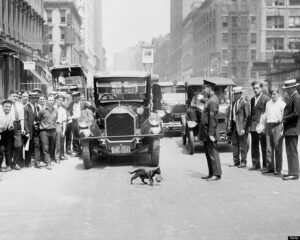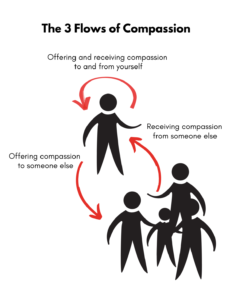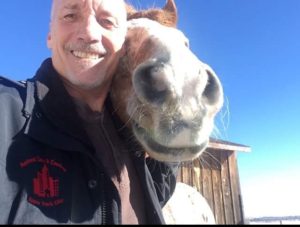 In the realm of animal welfare, collaboration stands as a powerful force for positive change, uniting individuals and organizations in a shared mission to protect and care for animals in need. Among the many collaborative endeavors, partnerships with rescue groups emerge as a key strategy, opening a pathway to expand resources, amplify impact, and unlock new opportunities for animals in need. As we look into the implementation of this strategy, we’ll see the transformative potential of collaboration with rescue groups and unveil innovative approaches to maximize its effectiveness. Continue reading “Strengthening Communities Through Collaborative Rescue Efforts”
In the realm of animal welfare, collaboration stands as a powerful force for positive change, uniting individuals and organizations in a shared mission to protect and care for animals in need. Among the many collaborative endeavors, partnerships with rescue groups emerge as a key strategy, opening a pathway to expand resources, amplify impact, and unlock new opportunities for animals in need. As we look into the implementation of this strategy, we’ll see the transformative potential of collaboration with rescue groups and unveil innovative approaches to maximize its effectiveness. Continue reading “Strengthening Communities Through Collaborative Rescue Efforts”
The Power of Behavioral Rehabilitation in Under-Budgeted and Under-Staffed Shelters
 In the intricate web of animal welfare, the journey towards finding loving homes for shelter animals often encounters roadblocks in the form of behavioral challenges. These challenges, ranging from fear and anxiety to undesirable behaviors, can significantly hinder an animal’s chances of adoption and long-term success in a home environment. However, within the constraints of under-budgeted and under-staffed shelters, lies an opportunity for innovation, resourcefulness, and unwavering dedication to the well-being of every animal in our care. Let us embark on a transformative exploration of behavioral rehabilitation, uncovering the strategies and principles that empower shelters to nurture the minds and transform the lives of shelter animals. Continue reading “The Power of Behavioral Rehabilitation in Under-Budgeted and Under-Staffed Shelters”
In the intricate web of animal welfare, the journey towards finding loving homes for shelter animals often encounters roadblocks in the form of behavioral challenges. These challenges, ranging from fear and anxiety to undesirable behaviors, can significantly hinder an animal’s chances of adoption and long-term success in a home environment. However, within the constraints of under-budgeted and under-staffed shelters, lies an opportunity for innovation, resourcefulness, and unwavering dedication to the well-being of every animal in our care. Let us embark on a transformative exploration of behavioral rehabilitation, uncovering the strategies and principles that empower shelters to nurture the minds and transform the lives of shelter animals. Continue reading “The Power of Behavioral Rehabilitation in Under-Budgeted and Under-Staffed Shelters”
Innovative Approaches to Medical Rehabilitation: Incremental Veterinary Care
Understanding Incremental Veterinary Care in the Shelter Environment
At its core, incremental veterinary care is a case management strategy that empowers shelter veterinarians to make informed decisions about the allocation of limited resources based on the individual needs of each patient and the overall welfare of the shelter population. This approach acknowledges the inherent financial constraints of shelters while prioritizing the well-being of the animals under their care. Continue reading “Innovative Approaches to Medical Rehabilitation: Incremental Veterinary Care”
Cultivating Compassionate Communities: Harnessing the Power of Community Engagement and Education in Animal Welfare

As a fervent advocate for animal welfare, I have witnessed firsthand the profound impact that community engagement and education can have in transforming the lives of animals and the communities they inhabit. By empowering individuals with knowledge, instilling a sense of responsibility, and fostering empathy towards animals, we can effectively address the root causes of pet overpopulation and relinquishment rates. Let us embark on a journey into the many ways community engagement and education can serve as catalysts for positive change in the realm of animal welfare. Continue reading “Cultivating Compassionate Communities: Harnessing the Power of Community Engagement and Education in Animal Welfare”
Trap/Neuter/Return (TNR): A Humane Solution to Feral Cat Overpopulation

Feral cat overpopulation poses a significant challenge in various regions, including Hawaii, where colonies of free-ranging cats have become a contentious issue. The practice of Trap/Neuter/Return (TNR) emerges as a humane and viable solution to address this problem. Despite protests and criticism, TNR stands out as an effective approach that not only addresses feline overpopulation but also addresses the concerns raised by ecologists and wildlife advocates. Continue reading “Trap/Neuter/Return (TNR): A Humane Solution to Feral Cat Overpopulation”
The Compassionate Path: A Journey to a Well-Balanced Life
 In a world often dominated by hustle, competition, and the pursuit of success, it’s easy to lose sight of what truly matters. As someone who has spent a considerable portion of my life dedicated to animal welfare and community building, I’ve come to believe that compassion is not just a virtue but a guiding principle that can lead us to a more well-balanced and fulfilling existence. Continue reading “The Compassionate Path: A Journey to a Well-Balanced Life”
In a world often dominated by hustle, competition, and the pursuit of success, it’s easy to lose sight of what truly matters. As someone who has spent a considerable portion of my life dedicated to animal welfare and community building, I’ve come to believe that compassion is not just a virtue but a guiding principle that can lead us to a more well-balanced and fulfilling existence. Continue reading “The Compassionate Path: A Journey to a Well-Balanced Life”
The Timeless Connection Between Humanity and Equines
In the bustling hum of urban life and the echoes of history’s whispers, there exists a profound and enduring tale of kinship – the timeless bond shared between humans and equines. As we venture into the depths of this intricate relationship, the narrative unfolds, revealing a tapestry woven with threads of companionship, resilience, and shared destinies. Continue reading “The Timeless Connection Between Humanity and Equines”
history’s whispers, there exists a profound and enduring tale of kinship – the timeless bond shared between humans and equines. As we venture into the depths of this intricate relationship, the narrative unfolds, revealing a tapestry woven with threads of companionship, resilience, and shared destinies. Continue reading “The Timeless Connection Between Humanity and Equines”
Celebrating the Diversity of Equines
Today, I want to expand upon our recent discussion concerning equine welfare and the rich diversity found within the equine family. The intricate tapestry of their roles in our lives, from their remarkable qualities to their profound impact on human society, offers a captivating narrative that deserves our appreciation and admiration.
concerning equine welfare and the rich diversity found within the equine family. The intricate tapestry of their roles in our lives, from their remarkable qualities to their profound impact on human society, offers a captivating narrative that deserves our appreciation and admiration.
So, in today’s blog, I want to venture further into the heart of what makes each type of equine so unique, as well as share some inspiring words that have sought to capture their essence across the ages. Continue reading “Celebrating the Diversity of Equines”
Ensuring the Welfare of Equines in Today’s Economy
 Today, I want to address a topic that’s very close to my heart – the welfare of equines in our uncertain economy.
Today, I want to address a topic that’s very close to my heart – the welfare of equines in our uncertain economy.
In these challenging times, it’s more important than ever to ensure our beloved horses, donkeys, mules, and all various subspecies, hybrids, and regional variations within these categories, receive the care, respect, and attention they deserve. Continue reading “Ensuring the Welfare of Equines in Today’s Economy”
Compassion for Animals and the Human Condition: Insights from the World’s Greatest Thinkers
Amidst the hustle and bustle of our major metropolitan areas there is a rising chorus advocating for a resurgence of compassion toward our fellow creatures. This isn’t just a contemporary notion—it’s an age-old refrain echoing through the wisdom of the world’s greatest philosophers, prophets, poets, and statesmen. Here are a few examples:
Aristotle: The Greek philosopher Aristotle, renowned for his keen insights into ethics and human nature, held the belief that our capacity for compassion transcends human boundaries. He contended that kindness towards animals is an integral facet of moral virtue, asserting that “being a good human” also means being kind to animals. Continue reading “Compassion for Animals and the Human Condition: Insights from the World’s Greatest Thinkers”
keen insights into ethics and human nature, held the belief that our capacity for compassion transcends human boundaries. He contended that kindness towards animals is an integral facet of moral virtue, asserting that “being a good human” also means being kind to animals. Continue reading “Compassion for Animals and the Human Condition: Insights from the World’s Greatest Thinkers”
